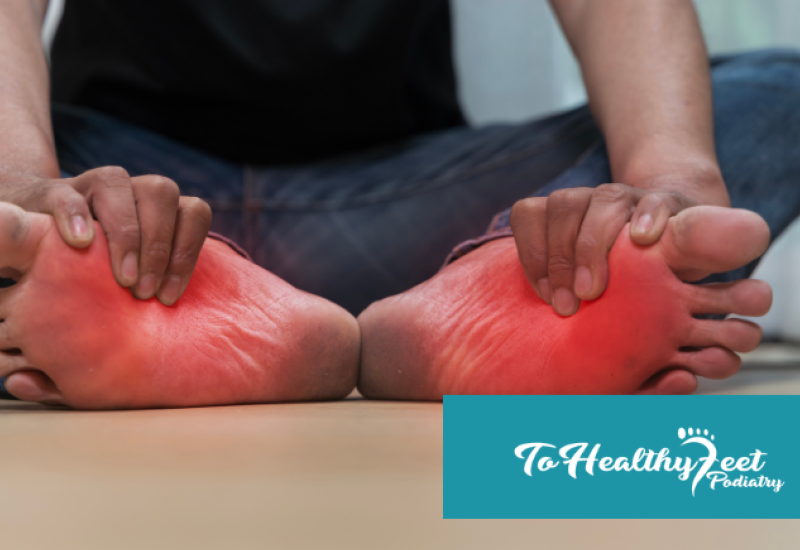Plantar Fibromas: What Is It And How Can It Be Treated?
What Are The Symptoms Of Plantar Fibromas?
The most common symptom of a plantar fibroma is pain in the arch of the foot. Wearing shoes can put pressure on the bottom of the foot and make the pain more noticeable. Large fibromas can cause a sensation of pressure in your arch. They may feel like a pebble of a marble under your foot and you may be able to see them under the surface of your skin.
What Causes Plantar Fibromas?
There is no known cause for plantar fibromas but certain factors can increase your risk for developing them including:
- Age: People between the ages of 40 and 60 are more likely to develop a plantar fibroma.
- Gender: Men are twice as likely as women to develop a plantar fibroma and consequently plantar fibromatosis.
- Ethnicity: People of European descent are at higher risk of developing plantar fibromas.
- Genetics: If someone in your immediate family has plantar fibromas, you may be more prone to develop them too.
- Underlying Health Concerns: Some health conditions like diabetes, epilepsy, and alcohol use disorder can increase your risk for developing plantar fibromas.
Treatment Options For Plantar Fibromas
Many treatments for plantar fibromas are focused on relieving the symptoms. These include OTC (over-the-counter) pain medications, orthotics, topical ointments, and cortisone injections. But plantar fibromas are unlikely to get smaller or to resolve without treatment. Traditionally this has required excision surgery involving a large incision on the bottom of the foot. This course of treatment results in a long recovery, the inability to bear weight on the foot for a minimum of three weeks, stitches, and the use of assistive aids like crutches. There is also a possibility of surgical complications like infection, scarring, and loss of sensation.
Advanced technologies in the treatment of fibromas have resulted in a non-surgical removal option; minimally invasive surgery for plantar fibroma.
How Does It Work?
Your podiatrist will use a high-powered, ultrasonic energy wand with a hollow tip to completely emulsify and remove the fibrous tissues.
What Are The Benefits Of Minimally Invasive Surgery?
There are many benefits to choosing MIS over traditional surgical excision or conventional symptom-management treatments. These include:
- Safer: MIS ultrasonic treatment for plantar fibromas is quick and does not require the incision used in traditional excision surgery, reducing the risk for infection and scarring. MIS is completed as an outpatient procedure and does not require general sedation, eliminating the risks associated with anesthesia. MIS can be done using local freezing or mild sedation.
- Targeted Intervention: Minimally invasive surgery allows your podiatrist or orthopedic surgeon to pinpoint a specific treatment area and avoid damage to healthy surrounding tissue and will not weaken the ligaments of the foot.
- Quick Treatment: Ultrasonic treatment is fast, sometimes taking as little as 90 seconds per insertion.
- Shorter Recovery Times: After treatment, you will require a compression dressing and may need to wear an orthotic boot for 1-2 weeks, but you will be able to walk shortly after the procedure.
- Treats More Than The Symptoms: Unlike conventional non-surgical treatments, MIS will address the cause of symptoms and eliminate the fibroma rather than just managing the pain.
Microsurgery Solutions For Foot Pain In Manhattan With Expert NYC Podiatrists
If pain and loss of mobility due to plantar fibromas are keeping you off your feet, there is a safer but effective solution to get you on your feet again. Minimally invasive microsurgery can remove painful plantar fibromas without the risks associated with traditional surgery and with more effective outcomes than conventional symptom-management treatments. If you are experiencing painful plantar fibromas or any other undiagnosed foot pain, numbness, or tingling contact the team of expert NYC podiatrists at To Healthy Feet today.
Our expert team of NYC foot doctors can expertly assess your pain and other symptoms and recommend the most ideal course of treatment to get you walking freely and without discomfort. We provide accurate diagnosis and comprehensive foot and ankle care and have the tools necessary to provide a variety of tailored treatment approaches including minimally invasive surgical options at each of our Manhattan Podiatry Clinics. If you are experiencing fibroma pain or suffering due to any other foot or ankle condition pain, call To Healthy Feet Podiatry at 1-917-398-3668 or fill out the contact form to book your appointment at our Upper East Side, Times Square, Midtown Grand Central, or Downtown Wall Street locations today.
FAQ
Q: How long will I have to be off my foot after minimally invasive surgery for my plantar fibroma?
A: Recovery after minimally invasive treatment depends on the size of your fibroma and the number of fibromas you have. The larger the fibroma, the more time you will need to rest your foot in a special walking boot. Even when using the boot, you will still be able to walk. On average, people remain partially weight-bearing in a special shoe or boot for about one week.
Q: Can I prevent a plantar fibroma?
A: There is nothing you can do to prevent a plantar fibroma from developing, but you can manage the pain and pressure associated with plantar fibromas by wearing supportive, well-fitted footwear, and exercising and stretching your plantar fascia regularly.
Q: When should I see my podiatrist?
A: Most plantar fibromas do not need to be treated until they begin causing pain or affecting mobility, but anytime you notice new growths, changes in the structures and shape of your foot, or when you experience unexplained pain, or your mobility is affected, you should visit your podiatrist for assessment.




